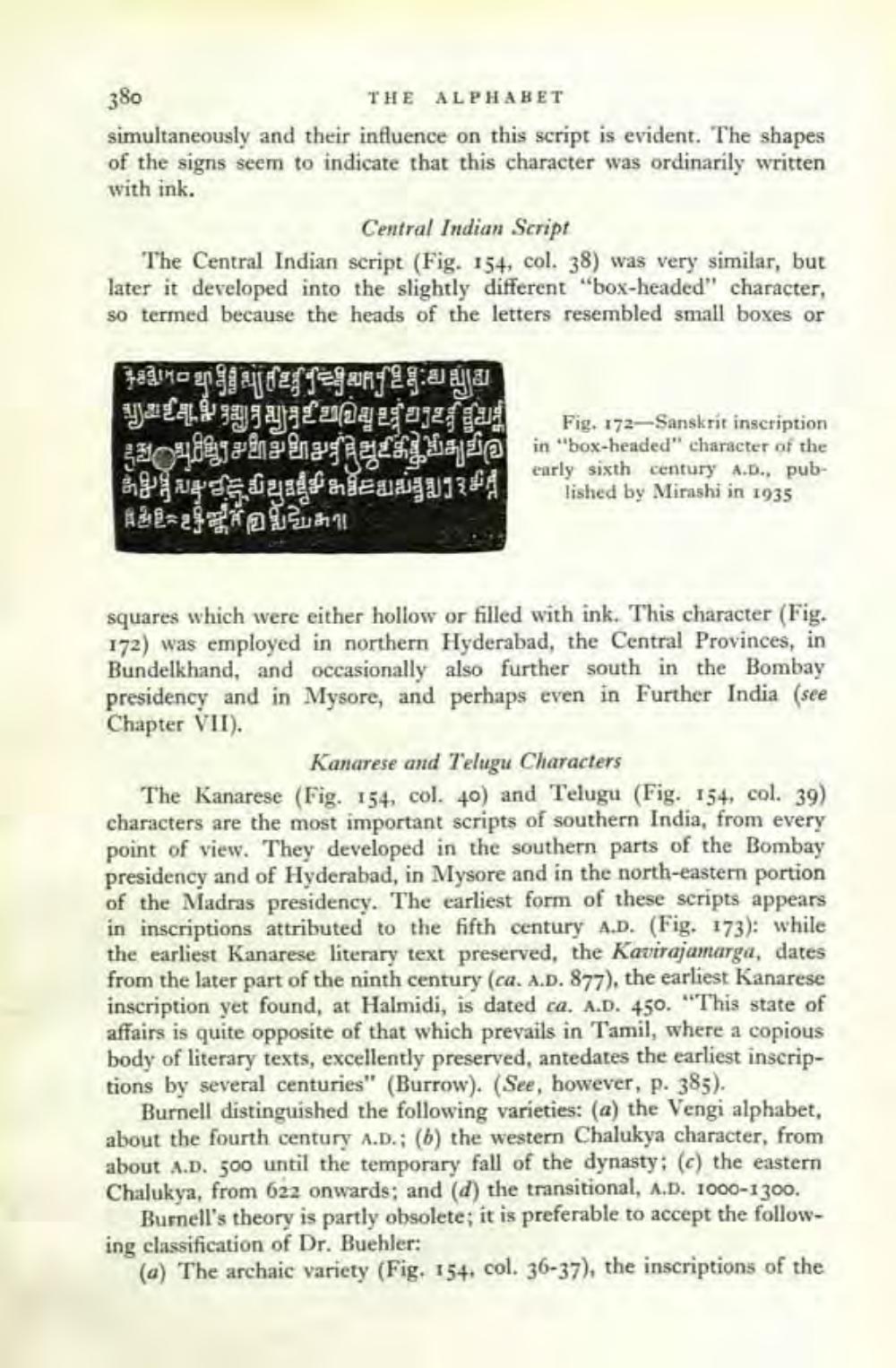________________
380
THE ALPHABET simultaneously and their influence on this script is evident. The shapes of the signs seem to indicate that this character was ordinarily written with ink.
Central Indian Script The Central Indian script (Fig. 154, col. 38) was very similar, but later it developed into the slightly different "box-headed" character, so termed because the heads of the letters resembled small boxes or
Fig. 172-Sanskrit inscription
Faq1o en EESTEN a aya ya£4.914-2020 1304872219&SELTHEBO in "box-headed" character of the
ឌី សៅតខ្លួនខ្ញុំ១៩៩៥៤ដ្ឋរួមគ្នា Adlazi na
early sixth century A.D., pub
lished by Mirashi in 1935
squares which were either hollow or filled with ink. This character (Fig. 172) was employed in northern Hyderabad, the Central Provinces, in Bundelkhand, and occasionally also further south in the Bombay presidency and in Mysore, and perhaps even in Further India (see Chapter VII).
Kanarese and Telugu Characters The Kanarese (Fig. 154, col. 40) and Telugu (Fig. 154, col. 39) characters are the most important scripts of southern India, from every point of view. They developed in the southern parts of the Bombay presidency and of Hyderabad, in Mysore and in the north-eastern portion of the Madras presidency. The earliest form of these scripts appears in inscriptions attributed to the fifth century A.D. (Fig. 173): while the earliest Kanarese literary text preserved, the Kavirajamarga, dates from the later part of the ninth century (ca. A.D. 877), the earliest Kanarese inscription yet found, at Halmidi, is dated ca. A.D. 450. "This state of affairs is quite opposite of that which prevails in Tamil, where a copious body of literary texts, excellently preserved, antedates the earliest inscriptions by several centuries" (Burrow). (See, however, p. 385).
Burnell distinguished the following varieties: (a) the Vengi alphabet. about the fourth century A.D.; (b) the western Chalukya character, from about A.D. 500 until the temporary fall of the dynasty: (c) the eastern Chalukya, from 622 onwards; and (d) the transitional, A.D. 1000-1300.
Burnell's theory is partly obsolete; it is preferable to accept the following classification of Dr. Buehler:
(a) The archaic variety (Fig. 154. col. 36-37), the inscriptions of the




